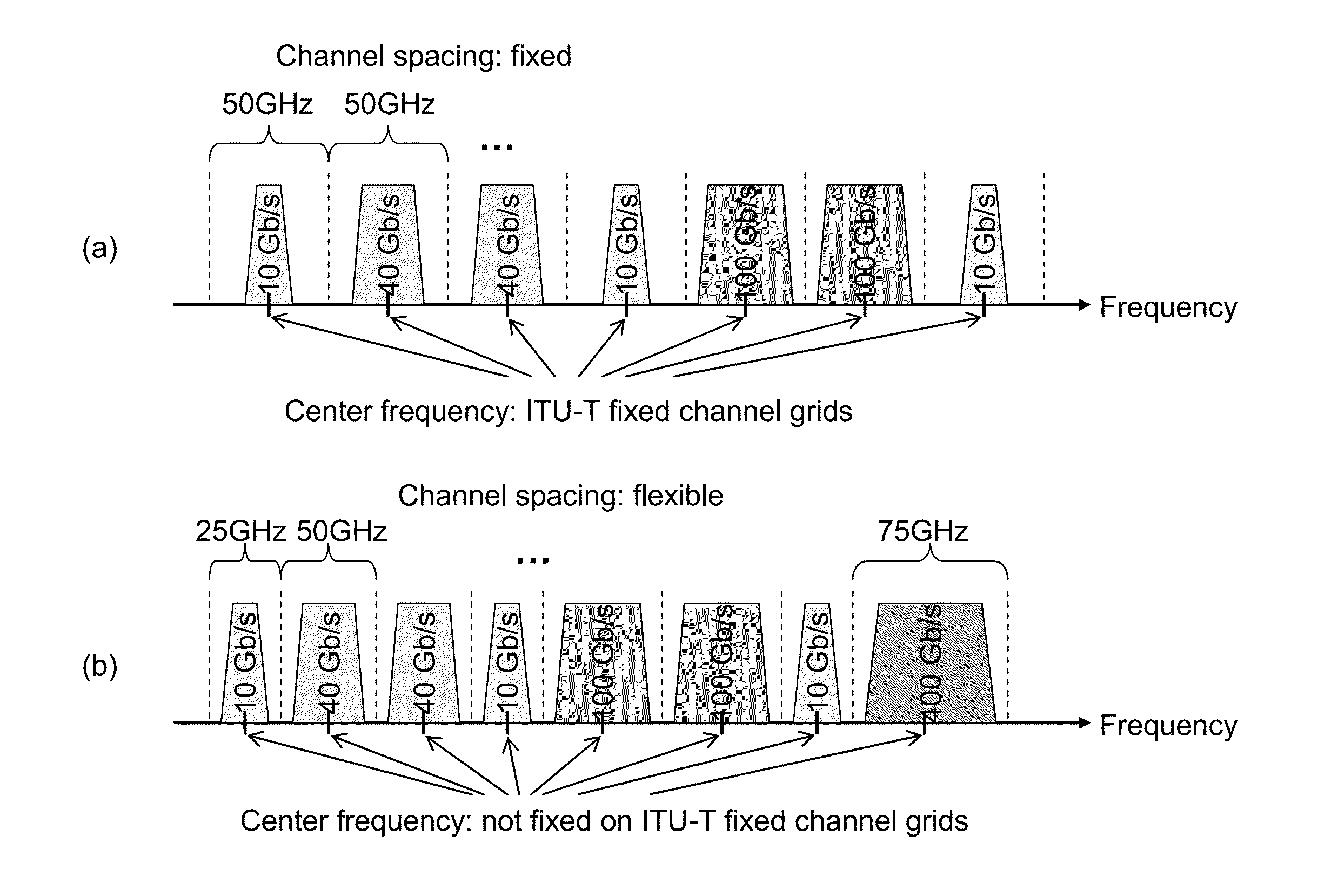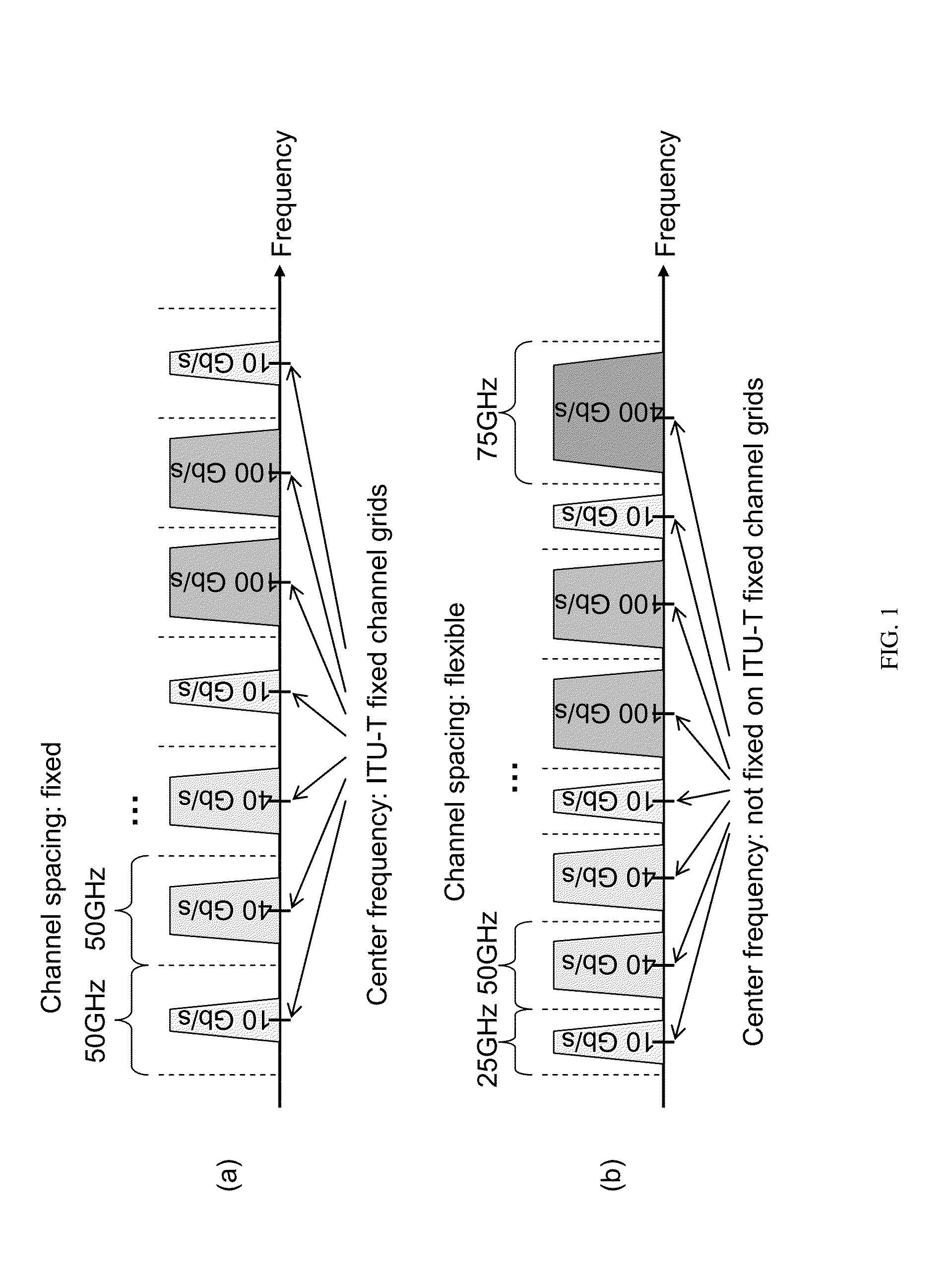Method for traffic grooming, wavelength assignment and spectrum allocation
a technology of wavelength assignment and spectrum allocation, applied in the field of optical communication, can solve the problems of not optimizing not being able to optimize the spectrum allocation of channels operating at lower line rates, etc., and achieve the effect of greater network optimization
- Summary
- Abstract
- Description
- Claims
- Application Information
AI Technical Summary
Benefits of technology
Problems solved by technology
Method used
Image
Examples
Embodiment Construction
[0020]The present invention is directed to traffic grooming, routing, wavelength assignment, and spectrum allocation procedure for the GRWSA problem in flexible optical WDM networks. The problem analysis is divided into five parts: line rate selection sub-problem, traffic routing sub-problem, channel routing sub-problem, wavelength assignment sub-problem, and spectrum allocation sub-problem. The line rate selection and the traffic routing sub-problems are first solved sequentially, and then, the channel routing, wavelength assignment, and spectrum allocation sub-problems are solved at the same time using an auxiliary graph based approach. The inventive procedure is not only applicable for channels with an OFDM modulation format, but also applicable to channels with single carrier modulation formats.
[0021]Referring now in detail to the figures in which like numerals represent the same or similar elements and initially to FIG. 1, an exemplary optical grooming node 100 is shown. We are...
PUM
 Login to View More
Login to View More Abstract
Description
Claims
Application Information
 Login to View More
Login to View More - R&D
- Intellectual Property
- Life Sciences
- Materials
- Tech Scout
- Unparalleled Data Quality
- Higher Quality Content
- 60% Fewer Hallucinations
Browse by: Latest US Patents, China's latest patents, Technical Efficacy Thesaurus, Application Domain, Technology Topic, Popular Technical Reports.
© 2025 PatSnap. All rights reserved.Legal|Privacy policy|Modern Slavery Act Transparency Statement|Sitemap|About US| Contact US: help@patsnap.com



